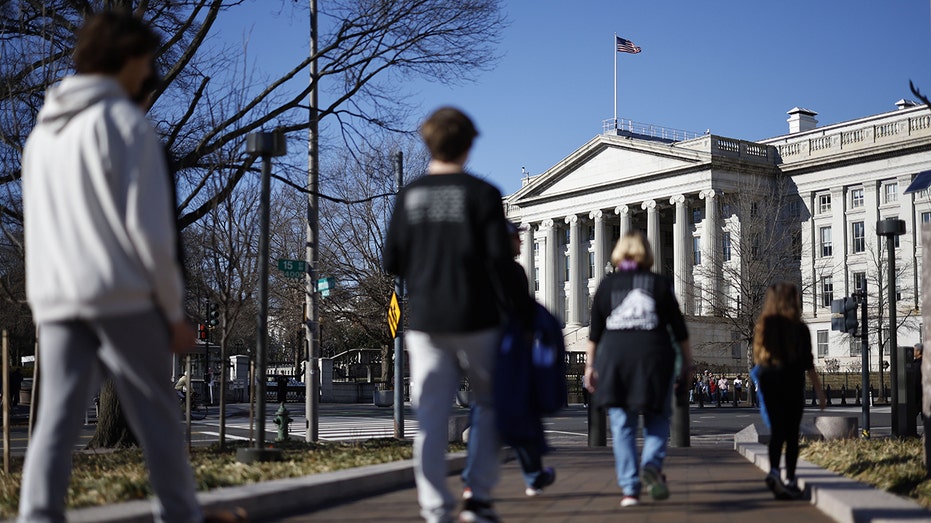Fed expected to pave way for rate cuts next year as inflation fight comes to an end
Fed's tightening campaign may be coming to an end, but when will it cut rates?
Fed will rather risk a recession before they let inflation rebound, expert says
Stifel Financial CEO and Chairman Ronald Kruszewski discusses whether the market is too optimistic about a Fed rate cut on 'The Claman Countdown.'
After a nearly two-year battle against high inflation, the Federal Reserve is all but ready to declare victory at the conclusion of its meeting on Wednesday and open the door to cutting interest rates in 2024.
Fed officials are widely expected to hold interest rates steady at a range of 5.25% to 5.5%, the highest level in 22 years, and make only minor changes to their policy statement.
However, Wall Street is even more laser-focused on the new quarterly economic projections that will be released after the Fed's meeting – and that will include a forecast of where policymakers expect their key rate to be at the end of 2024.
"We expect that the Fed will offer a more encouraging outlook on growth, employment and inflation and set the stage for rate cuts," said Joe Brusuelas, RSM chief economist.
FED SKIPS AN INTEREST RATE HIKE, BUT HIGH MORTGAGE RATES COULD BE HERE TO STAY
While the economic projections may paint a more optimistic picture of the economy, Fed Chairman Jerome Powell is expected to "stick to the script" about keeping interest rates elevated until policymakers are convinced that inflation has returned to the central bank's 2% target, according to Greg McBride, chief financial analyst at Bankrate.
In recent weeks, Powell has continued to keep the possibility of another rate hike in play and downplayed recent declines in consumer prices, suggesting it is still too early to declare victory – or discuss when the central bank may begin to cut interest rates.
US ECONOMY ADDS 199,000 JOBS IN NOVEMBER, UNEMPLOYMENT RATE UNEXPECTEDLY FALLS
"It would be premature to conclude with confidence that we have achieved a sufficiently restrictive stance, or to speculate on when policy might ease," Powell said while speaking at Spelman College in Atlanta. "We are prepared to tighten policy further if it becomes appropriate to do so."
Despite the hawkish overtures, many investors expect the central bank to begin cutting rates in the middle of next year amid signs the economy is cooling. Analysts at Bank of America, UBS and Deutsche Bank are among those predicting rate cuts in 2024, as early as March and as late as July.
| Ticker | Security | Last | Change | Change % |
|---|---|---|---|---|
| I:DJI | DOW JONES AVERAGES | 48134.89 | +183.04 | +0.38% |
| I:COMP | NASDAQ COMPOSITE INDEX | 23307.620391 | +301.26 | +1.31% |
| SP500 | S&P 500 | 6834.5 | +59.74 | +0.88% |
"We think the market may have run ahead of the likely pace of cuts," said Solita Marcelli, chief investment officer for the Americas at UBS Global Wealth Management. "Our base case is that the Fed will deliver two to three cuts next year, with the timing data dependent, but most likely starting in July."
The Fed voted during meetings in both September and November to hold interest rates steady. Officials are now trying to figure out whether they have tightened monetary policy enough or whether they need to raise rates higher to crush still-high inflation.
FED'S FIGHT AGAINST INFLATION IS WEIGHING ON MIDDLE-CLASS AMERICANS
While inflation has cooled considerably in recent months, it remains up 3.2% compared with the same time a year ago, according to the most recent Labor Department data.
However, many Fed officials have signaled in recent weeks that rate hikes are over, even as they push back on market expectations for steep rate cuts.

Pedestrians near the U.S. Treasury building in Washington, D.C., on Friday, Dec. 30, 2022. (Photographer: Ting Shen/Bloomberg via Getty Images / Getty Images)
"My assessment is that we are at, or near, the peak level of the target range of the federal funds rate," New York Fed President John Williams said in a speech last week. He added, "I expect it will be appropriate to maintain a restrictive stance for quite some time to fully restore balance and to bring inflation back to our 2% longer-run goal on a sustained basis."
GET FOX BUSINESS ON THE GO BY CLICKING HERE
Policymakers have raised interest rates sharply over the past year, approving 11 rate increases in the hopes of crushing inflation and cooling the economy. In the span of just 16 months, interest rates surged from near zero to above 5%, the fastest pace of tightening since the 1980s.
Hiking federal rates tends to create higher interest rates on consumer and business loans, which then slows the economy by forcing employers to cut back on spending. Higher rates have helped push the average rate on 30-year mortgages above 7% for the first time in years. Borrowing costs for everything from home equity lines of credit to auto loans and credit cards have also spiked.





















